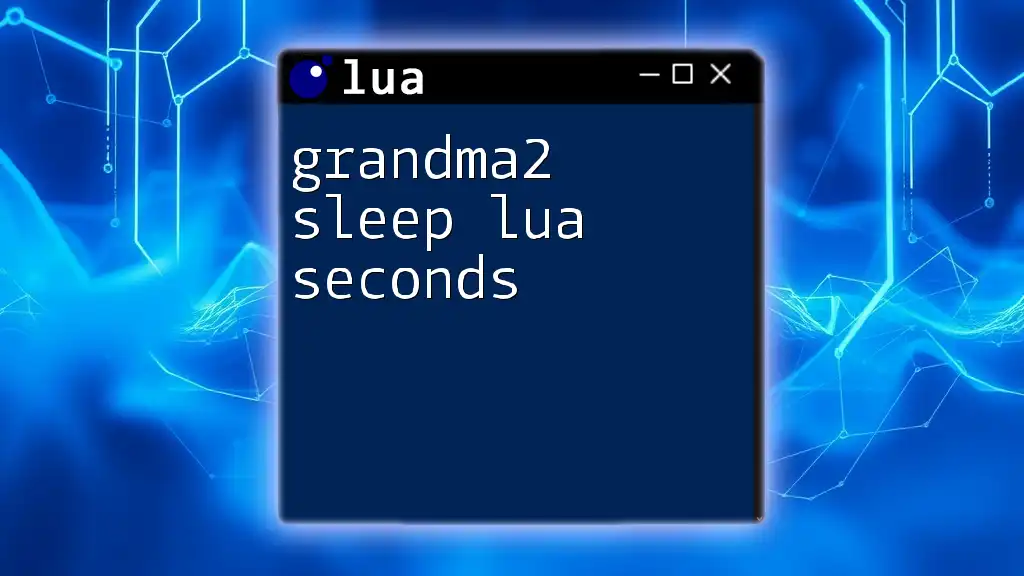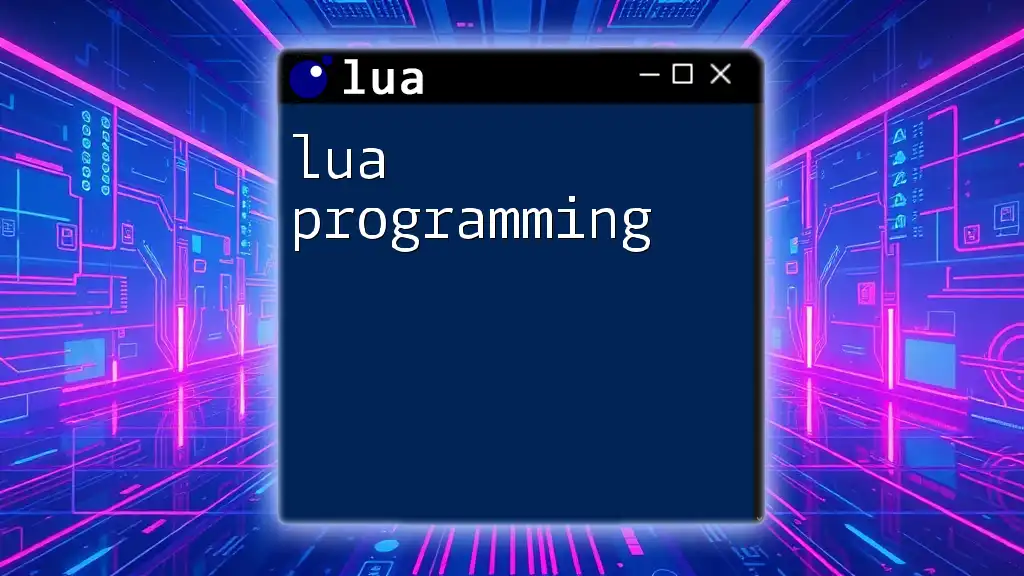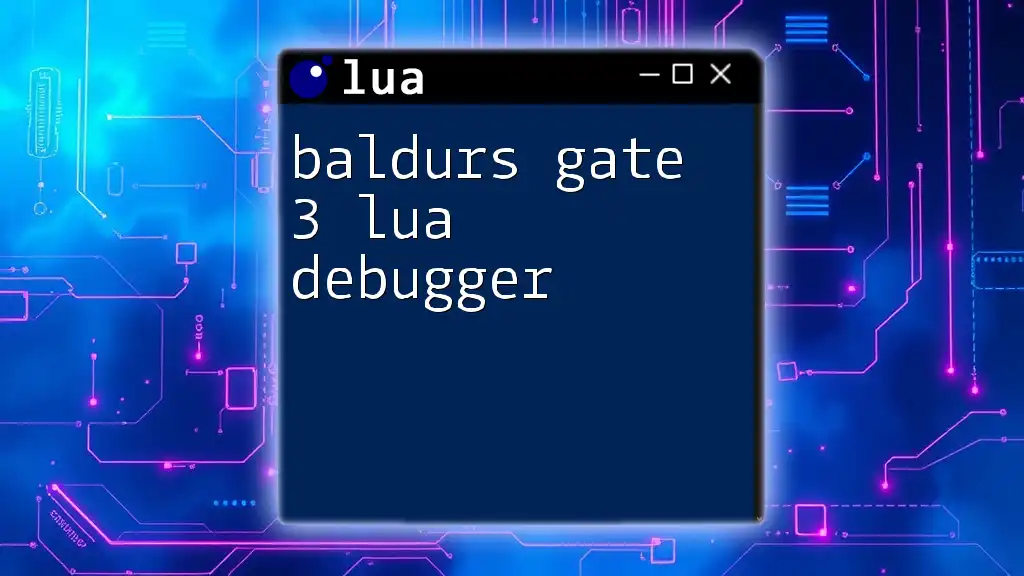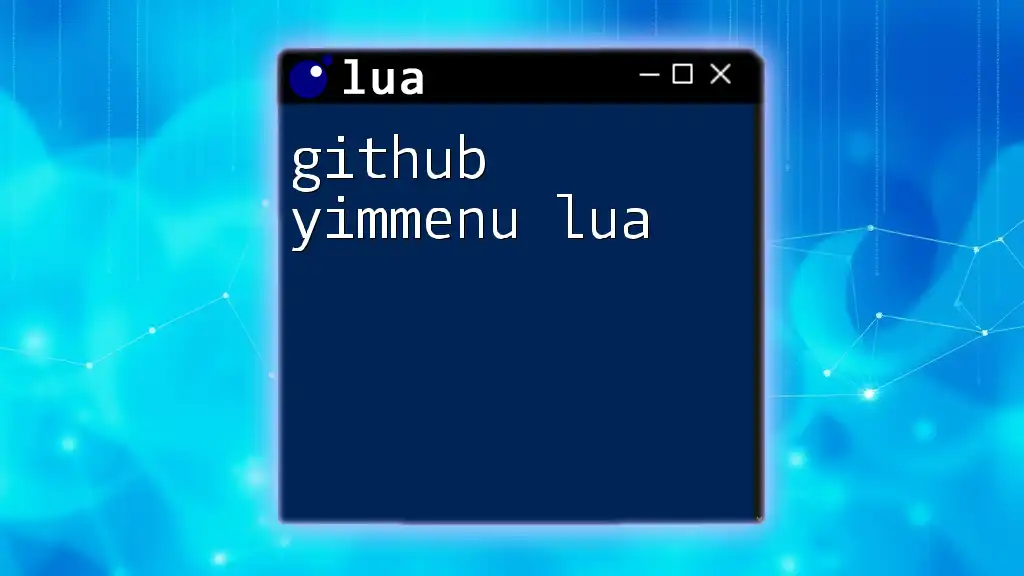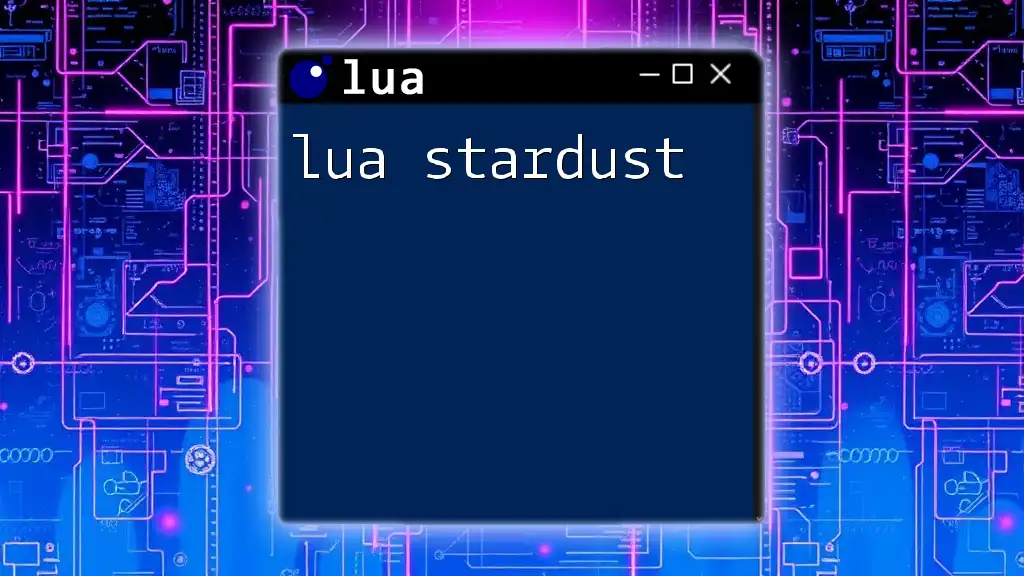The `sleep` function in Grandma2 Lua allows you to pause the execution of a script for a specified number of seconds, facilitating timed operations within your lighting control programming.
Here’s a simple example of how to use it:
-- Pause for 5 seconds
sleep(5)
Understanding the `sleep` Function in Lua
Definition and Purpose
The `sleep` function in Lua is a widely used command that instructs the script to pause for a specified amount of time. This is particularly useful in control systems like Grandma2, where timing plays a crucial role in orchestrating lighting changes and other effects. By utilizing the `sleep` command, you can control the flow of your script and ensure that actions happen in a well-timed sequence.
Syntax of `sleep`
The basic syntax of the `sleep` function is as follows:
sleep(seconds)
In this syntax:
- `seconds` must be a numeric value that denotes the duration of the pause. For example, a value of `5` means the script will pause for five seconds.
- Understanding the correct input type is critical, as passing a non-numeric value will lead to an error.
Use Cases of `sleep` in Grandma2
The `sleep` function opens up a world of possibilities in Grandma2 scripting. Here are a few common situations where you might find it particularly useful:
- Delaying Actions: You can insert pauses between actions to create a more dynamic and engaging lighting display.
- Synchronizing Events: When multiple elements need to coincide perfectly, using `sleep` can ensure that the timing is just right and events occur as intended.
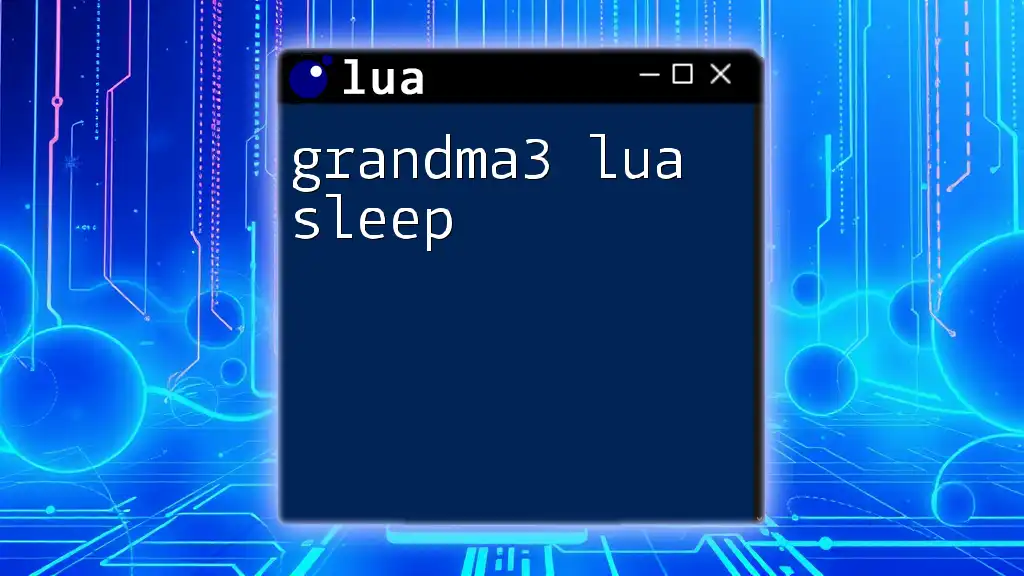
Implementing the `sleep` Command in Grandma2 Scripts
Setting Up Your Environment
Before diving into scripting, make sure you have access to the script editor in Grandma2. Here’s how you can get started:
- Open Grandma2 and navigate to the Script Editor.
- Select or create a new script where you can begin implementing your `sleep` commands.
Basic Example of `sleep` Command
Here’s a simple example demonstrating the use of the `sleep` function:
-- Basic delay example
print("Starting the sequence...")
sleep(3) -- pause for 3 seconds
print("Sequence resumed after 3 seconds.")
In this snippet:
- The first command initiates a print statement to the console, indicating that the sequence has started.
- The script then invokes `sleep(3)`, which tells the program to pause execution for three seconds.
- After the pause, the next print statement confirms the resumption of the sequence.
This basic structure highlights how `sleep` can be a straightforward yet effective tool for managing timing in your scripts.
Advanced Usage of `sleep` with Multiple Commands
The power of the `sleep` command truly shines when used to manage multiple commands. Here’s an example:
-- Sequential command execution with sleep
print("Turning on the lights...")
setLightIntensity(100)
sleep(2) -- wait for 2 seconds
print("Dimming the lights...")
setLightIntensity(50)
In this advanced snippet:
- The script first prints that the lights are being turned on and sets their intensity to 100.
- It then pauses for two seconds, allowing the lights to reach full intensity before proceeding.
- After the pause, a message indicates that the lights are dimming, and the intensity is adjusted to 50.
This pattern is invaluable for creating smooth transitions and ensuring that each state change occurs as part of a synchronized sequence.

Best Practices for Using `sleep` in Scripts
Avoiding Overuse of `sleep`
While the `sleep` command can be incredibly useful, it is essential to use it judiciously. Overusing `sleep` may lead to scripts that become difficult to manage, as unnecessary delays can hinder the responsiveness of your lighting control and make troubleshooting more complex. Instead, consider using other control logic or timing mechanisms to achieve performance objectives without relying heavily on `sleep`.
Error Handling with `sleep`
Error handling is crucial when working with `sleep`. A good strategy is to incorporate checks before calling `sleep`. If timing is critical, consider using a timer or a counter to manage your script execution flow.
Implementing simple error checks can save you a lot of debugging time. For instance:
-- Example with error handling
local duration = 5 -- specify the sleep duration
if type(duration) == "number" and duration > 0 then
sleep(duration)
else
print("Invalid sleep duration specified.")
end
In this example, you first verify that the `duration` variable holds a valid numeric value before calling `sleep`. This helps ensure that your script remains robust and decreases the chance of unexpected errors during execution.

Real World Applications of `sleep` in Lighting Control
Creating Timed Effects
The `sleep` command is essential for creating timed lighting effects that enhance visual impact during performances. For example, you might want to set lights to flash in a specific rhythm or sequence. Here's how you might approach it:
function flashLights()
for i = 1, 5 do -- flash 5 times
setLightIntensity(100)
sleep(0.5) -- keep lights on for half a second
setLightIntensity(0)
sleep(0.5) -- keep lights off for half a second
end
end
flashLights()
In this script:
- The `flashLights` function controls the flashing effect, turning the lights on and off with a half-second interval.
- This method is effective for creating exciting visual moments during shows or events.
Synchronizing Multiple Fixtures
When multiple lighting fixtures are in play, it is vital to synchronize their actions precisely. Using `sleep` can facilitate this synchronization effectively. For instance:
print("Fixture 1 on...")
setLightIntensityFixture1(100)
sleep(1)
print("Fixture 2 on...")
setLightIntensityFixture2(100)
In the snippet above, Fixture 1 turns on first, followed by a one-second pause before Fixture 2 activates. This allows both fixtures to light up sequentially, creating a synchronized effect that can be particularly striking in stage performances.
Integrating with Other Grandma2 Features
Integrating the `sleep` command with Grandma2’s cues, sequences, and other scripting features enhances the overall lighting design. For example:
goToCue("OpeningScene")
sleep(5) -- wait for the cue to play
goToCue("Act1")
This integration allows cues to run for a designated time before transitioning to the next, permitting smooth changes in the show without manual intervention.

Conclusion
The `grandma2 sleep lua seconds` command holds significant potential for enhancing your scripting capabilities in Grandma2. By mastering its use, you can create synchronized effects, timed commands, and fluid transitions that transform any lighting setup into a captivating performance. As you practice and experiment with the command, you’ll uncover new ways to leverage Lua scripting to maximize your creativity and control in lighting design.

Additional Resources
To deepen your understanding of the `sleep` command and Lua scripting in general, consider exploring the official Grandma2 documentation and engaging with community forums. These resources offer a wealth of information and support for aspiring script developers.

Call to Action
We would love to hear your experiences and insights when using the `sleep` command in your scripts. Join our community and learn more by signing up for classes or workshops focused on Lua scripting for Grandma2. Let's take your lighting design skills to the next level!

